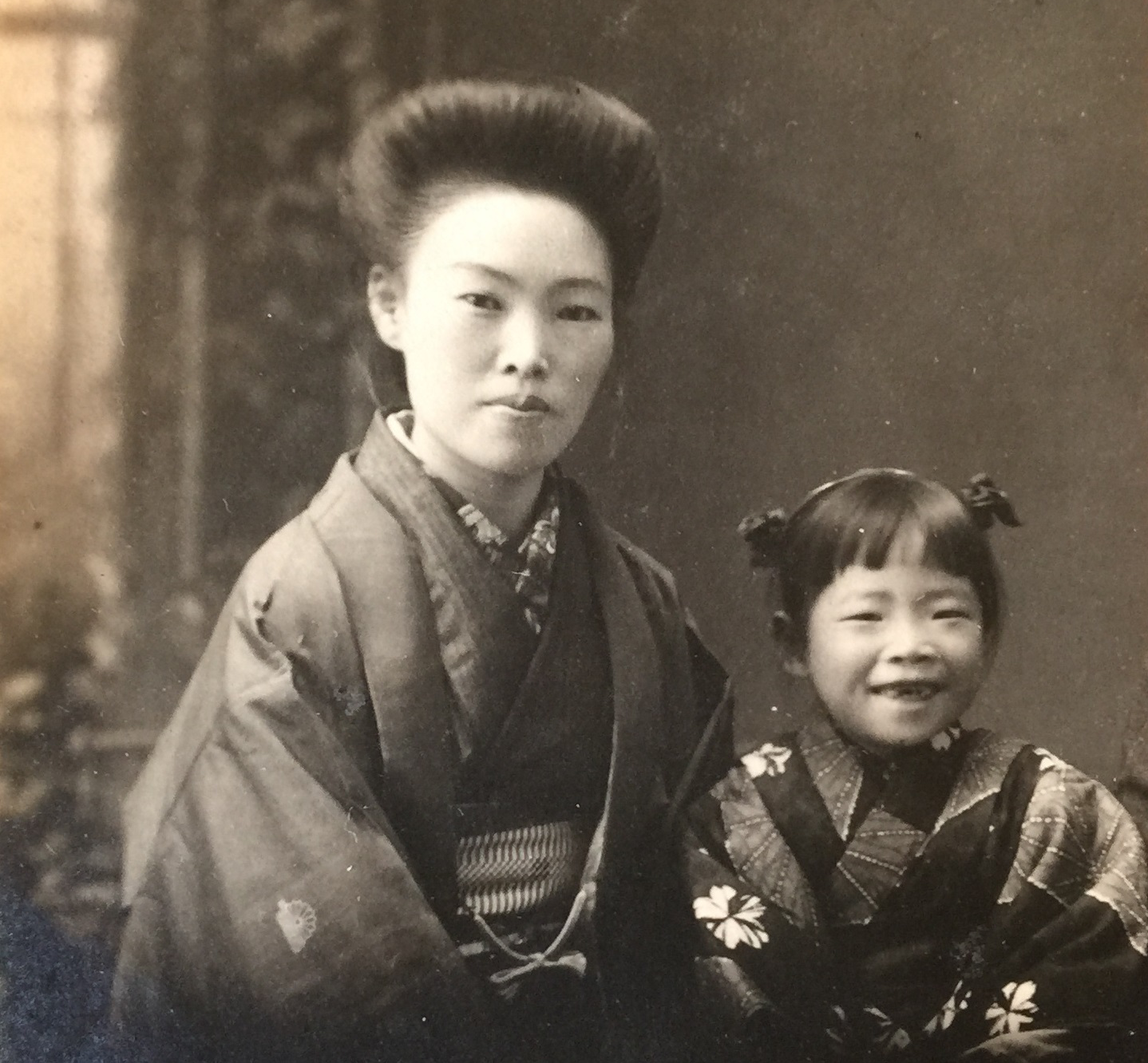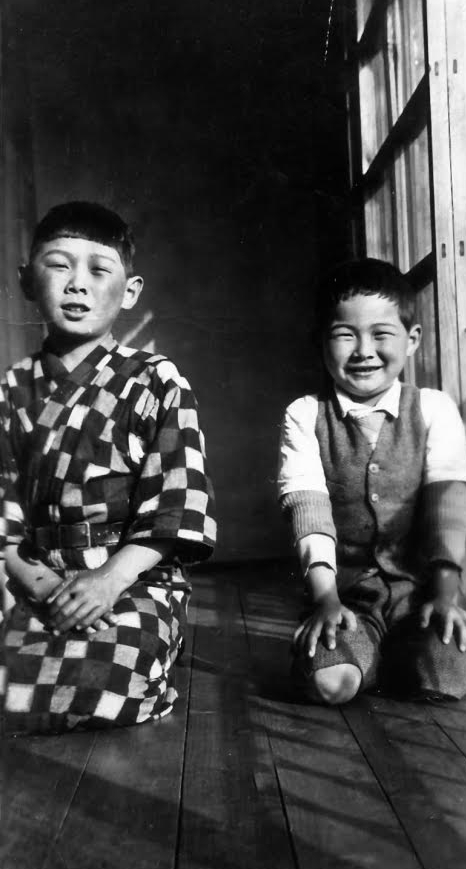Before the Camps
 Before Pearl Harbor and the internment camps, the Japanese American population was heavily concentrated on the West Coast, with the exception of those who lived in Hawaii. As racial prejudice and antagonism intensified, Japanese Americans found it increasingly difficult to be employed. The Japanese American community progressed to create an ethnic economic community that did business among one another. This type of “exclusivity” ironically led to the xenophobic idea in the majority of the non-Asian American public that the Japanese were unassimilable, further fueling war hysteria and the push for the internment camps.
Before Pearl Harbor and the internment camps, the Japanese American population was heavily concentrated on the West Coast, with the exception of those who lived in Hawaii. As racial prejudice and antagonism intensified, Japanese Americans found it increasingly difficult to be employed. The Japanese American community progressed to create an ethnic economic community that did business among one another. This type of “exclusivity” ironically led to the xenophobic idea in the majority of the non-Asian American public that the Japanese were unassimilable, further fueling war hysteria and the push for the internment camps.

The first major wave of Japanese immigration started in the late 1800s, with most immigrants coming from the southern prefectures of Japan. From 1870s to early 1920s, approximately 200,000 immigrated to the islands of Hawaii to work on the sugar plantation. Some 180,000 went to the mainland, mostly settling on the West Coast, as farmers, traders, and small businessmen. With the passage of the Chinese Exclusion Act of 1882 and the subsequent decline of imported Chinese workers, Japanese immigrants provided cheap yet necessary migratory labor for railroads, mines, farms, and canneries for American companies. Once they arrived here, the Japanese immigrants, like their Chinese counterparts, faced immense discrimination by not merely their employers on a daily basis but also the hands of the law, especially when most Japanese decided to settle in America.
For those immigrants who engaged in agriculture, most of them had been farmers in Japan and used the methods of contracting, sharing, leasing, and owning to gain land to farm. In addition to agriculture and migratory jobs, some Japanese labor contractors also worked as middlemen between the workers and the employers. In cities, there were distinct ethnic neighborhoods where the Japanese community existed, providing hotels, shops, restaurants, and various services to other Japanese without the fear of discrimination. Most of these enterprises were small and self-owned, yet they created job opportunities for other Japanese immigrants. The early Japanese immigrants came to the right place and at the right time for agriculture, as harvests were plentiful on the West Coast. Many of them grew fruit and vegetables, earned a respectable income, and hence eventually chose to settle down as a result. The Japanese immigrants’ entry into agriculture also created and then reinforced a reciprocal relationship between the urban community and the farmers, solidifying the “exclusive” ethnic economy; the urban areas provided labor, provisions, and capital, while farmers gave businessmen and produce distributors fresh fruits and vegetables.
As the Japanese ethnic economy on the West Coast thrived, many states began to call for legislation against the Japanese immigrants, claiming their presence was a “menace” and that they constituted a threat to “white” labor. In October of 1906, the debate of Japanese immigration sparked an international crisis. The San Francisco Board of Education then directed its school principals to send “all Chinese, Japanese and Korean children to the Oriental School,” against which the Japanese government protested. Although the government acted in favor of the Japanese immigrants, partially because of Japan’s strong military power, this incident only marked the beginning of the persecution of Japanese in America. In 1908 the Gentleman’s Agreement was passed, stopping emigration of laborers from Japan. As the support for anti-Japanese legislation grew, California passed a bill in 1913 that denied landownership to Japanese immigrants, followed by the Alien Land Law in 1920 that outlawed aliens’ eligibility to citizenship by leasing and owning agricultural land from native-born minors, and thus closed the loophole that the first generation immigrant (Issei) used to own land through their second generation children, the Nisei. Although the 1921 Ladies’ Agreement ended the emigration of picture brides from Japan, persecution continued as citizenship was denied to the Issei. The loss of the 1922 Ozawa case that challenged the ineligibility of landowning by Japanese was devastating, as the Supreme Court ruled that the plaintiff could not be naturalized because he was not Caucasian. This was followed by the 1924 General Immigration Law, targeting mostly Japanese immigrants, that limited the annual number of immigrants who could be admitted to the country.
For the Nisei, growing up in an American environment with their Japanese parents constituted a confused and at times conflicted feeling of having two different cultural identities. Many were sent to both American and Japanese schools and were registered to also have Japanese citizenship, so that they could have the option of returning to Japan if they wished. Stressing excellent education for the Nisei, the Issei expected their children to be successful, so they could become the cultural bridge that eased the tension and the animosity against Japan. They also believed the Nisei could show America the benefits that the Japanese American community would bring to the country. Meanwhile, the Nisei themselves strove to be accepted into the mainstream society through the merit of education. Most Nisei, therefore, pursued and obtained college degrees. However, employment discrimination made it difficult for them to seek employment, and they were often overqualified for the jobs they could find. Accordingly, the Nisei, exercising their rights as citizens, mobilized into groups and became politically active. The Japanese American Citizen’s League was created in 1930 by Dr. Thomas Yanabe, lawyers Saburo Kido and Clarence Arai. The JACL aspired to be as American as possible, educating the society at large the achievements of the Japanese American community and people. Rejecting the idea of dual citizenship promised them through their parents, the Nisei wholeheartedly embraced their Americanness, hoping for acceptance and assimilation. Little did they know that all was to change on December 7, 1941.

References
Densho Encyclopedia. “About the incarceration.” Retrieved from http://encyclopedia.densho.org/history/
Hosokawa, Bill. (1969). Nisei: the quiet Americans. New York, NY: W. Morrow.
Spickard, Paul R. (1996). Japanese Americans: The formation and transformations of an ethnic group. Thomas J. Archdeacon, Ed. New York, NY: Twayne Publishers.
Takaki, Ronald. (1998). Strangers from a different shore: A History of Asian Americans. Boston, MA: Little Brown and Company.
